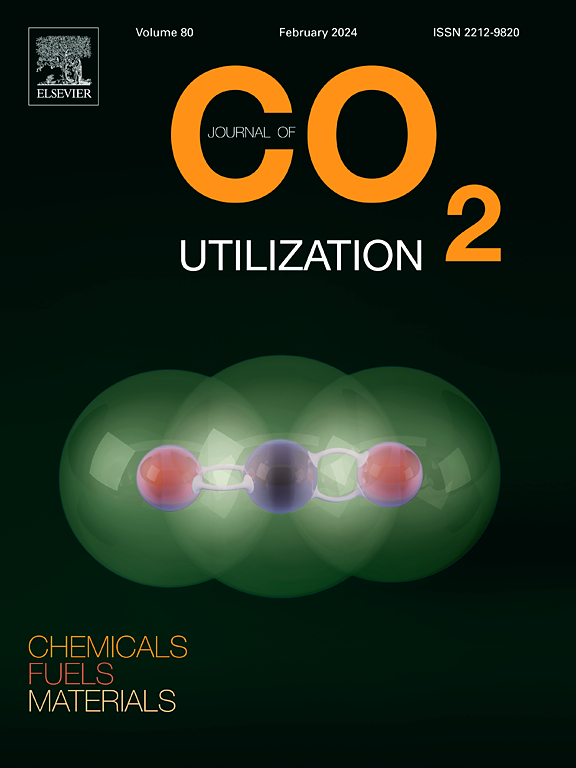Cu2O{111}或{110}晶圆在可见光下定向生长以实现CO2-H2O特异光(电)化学转化为甲醇/乙醇
IF 7.2
2区 工程技术
Q1 CHEMISTRY, MULTIDISCIPLINARY
引用次数: 0
摘要
p型半导体Cu2O切面{111}(八面体)和{110}(菱形十二面体)对CO2还原反应的光(电)催化活性高于{100}(立方)。本文首次采用两种不同形态的微藻硅藻硅质骨架:Navicula sp. (Nsp,细长孔形)和Conticribra weissflogii (Cw,圆孔形)作为Cu2O晶面定向生长的模板。在700°C下煅烧,以避免在光(电)催化过程中可能产生假阳性的残留有机物。研究发现,每一种晶体都优先诱导Cu2O的一个侧面。Nsp诱导{111}面(Band-gap=2.26 eV),而Cw优先诱导{110}面(Band-gap=1.96 eV)。在可见光照射下,nsp生长的Cu2O将CO2和H2O转化为甲醇,而cw生长的Cu2O则产生乙醇。不同的行为与两个方面不同的Cu-Cu距离(活性催化中心)有关。本文章由计算机程序翻译,如有差异,请以英文原文为准。
Orientational-growth of Cu2O {111} or {110} facets induced by frustules for CO2-H2O specific photo(electro)chemical conversion into methanol/ethanol under visible-light
p-Type-semiconductor Cu2O facets {111} (octahedral) and {110} (rhombododecahedral) present a higher photo(electro)catalytic activity towards CO2RRs (CO2 Reduction Reaction) than {100} (cubic). Two frustules (the siliceous skeleton of microalgae Diatoms) having a different morphology, namely: Navicula sp. (Nsp, elongated pore-shape) and Conticribra weissflogii (Cw, round pore-shape) have been used for the first time in this work as template for the orientational growth of Cu2O facets. Frustules are calcinated at 700 °C to avoid residual organics that may give false positives during photo(electro)catalysis. Each of the frustules is found to induce a facet of Cu2O preferentially. Nsp induces the {111} facet (Band-gap=2.26 eV), while Cw preferentially induces the {110} facet (Band-gap=1.96 eV). Under visible light irradiation, Nsp-grown Cu2O converts CO2 and H2O into methanol, while Cw-grown Cu2O produces ethanol. The different behaviour is related to the different Cu-Cu distance (the active catalytic centres) in the two facets.
求助全文
通过发布文献求助,成功后即可免费获取论文全文。
去求助
来源期刊

Journal of CO2 Utilization
CHEMISTRY, MULTIDISCIPLINARY-ENGINEERING, CHEMICAL
CiteScore
13.90
自引率
10.40%
发文量
406
审稿时长
2.8 months
期刊介绍:
The Journal of CO2 Utilization offers a single, multi-disciplinary, scholarly platform for the exchange of novel research in the field of CO2 re-use for scientists and engineers in chemicals, fuels and materials.
The emphasis is on the dissemination of leading-edge research from basic science to the development of new processes, technologies and applications.
The Journal of CO2 Utilization publishes original peer-reviewed research papers, reviews, and short communications, including experimental and theoretical work, and analytical models and simulations.
 求助内容:
求助内容: 应助结果提醒方式:
应助结果提醒方式:


